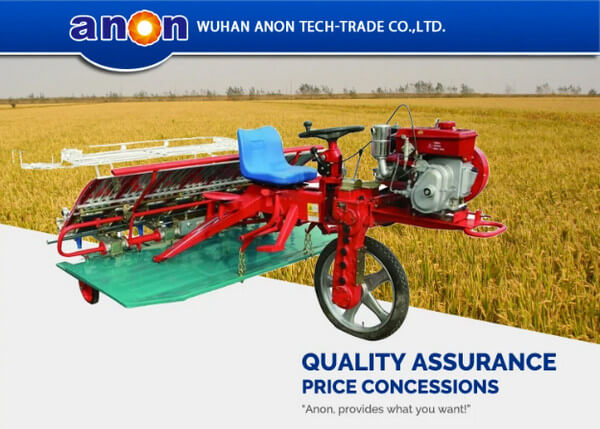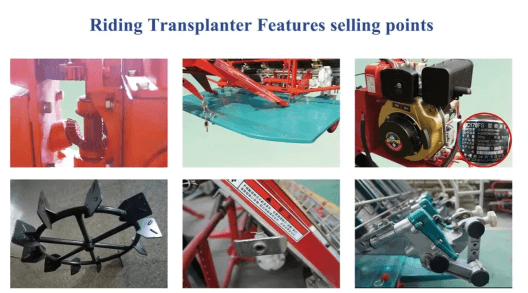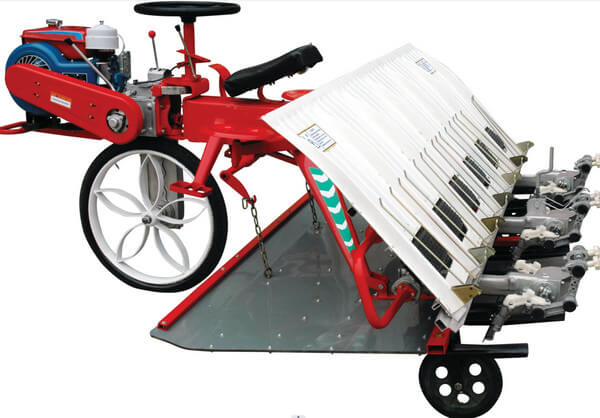Since ancient times, agriculture has been a basic industry necessary for human survival.
Especially in many developing countries and regions in Asia, rice is one of the main food crops.
The traditional planting method of manual transplanting is time-consuming and labor-intensive, and it is difficult to meet the growing demand.
In order to solve this problem, the rice transplanter came into being.
Below, ANON will introduce the uses, components, advantages and disadvantages of the rice transplanter in detail.
Designed to help readers better understand and choose a suitable rice transplanter.
What is a rice transplanter
As an agricultural machinery and equipment, the rice transplanter is mainly used for automated and mechanized rice transplanting operations.
It accurately inserts rice seedlings into the field through a series of operations and power systems,
Achieve efficient and fast rice transplanting operations.
The purpose of the rice transplanter is to improve agricultural production efficiency and reduce farmers’ labor intensity.
Ensure consistent depth and density of rice transplanting to improve rice yield and quality.
Simply put, the rice transplanter is uses to automatically insert rice seedlings into the field.

Components of rice transplanter
Rice transplanters usually consist of a rice seedling box, a rice transplanting mechanism, a frame, and a floating body.
It is composed of power drive, traveling device, seedling feeding mechanism and other parts.
Its main purpose is to perform rice transplanting operations in rice fields to replace traditional manual rice transplanting, thereby improving work efficiency.

A standard rice transplanter usually consists of the following basic parts:
- Seedling supply system: Through this system, growers can place rice seedlings on the rice transplanter for the machine to automatically insert into the soil.
- Transport system: This system is responsible for transporting rice seedlings from the seedling supply system to the location of the transplanting tools.
- Transplanting tool: The transplanting tool is the core part of the rice transplanter. Its main function is to insert rice seedlings into the soil.
- Control system: Rice transplanters are usually equipped with a control system.
Used to control the movement and speed of transplanting tools to ensure accuracy and consistency of planting.
What are the uses of rice transplanters
The rice transplanter is mainly uses for rice transplanting operations in rice fields.
It can be widely used in different types of farmland, such as flat land, hills, mountains, etc.
It is suitable for large-area rice cultivation, can improve operating efficiency and reduce manpower input.
At the same time, the rice transplanter can also adjust the depth and density of the rice transplanting pole.
Implement reasonable rice transplanting methods to promote rice growth and development.

Rice transplanter are widely uses in rice cultivation.
- Improve planting efficiency: Compared with traditional manual transplanting,
The rice transplanter can greatly improve the efficiency of planting and reduce the investment of human resources. - Reduce labor intensity: The automated rice transplanting process reduces farmers’ physical labor.
Reduces labor intensity and fatigue. - Improve planting quality: The rice transplanter can ensure that the planting depth and spacing of each rice seedling are uniform.
Improved planting quality and yield. - Cost saving: The use of rice transplanters can reduce labor consumption and seedling waste, thereby reducing planting costs.
What are the advantages and disadvantages
After understanding the above product information, we also have a rough idea of the uses of the rice transplanter.
Next, ANON will introduce the advantages and disadvantages of this agricultural machinery and equipment in detail with the farmer friends.
The rice transplanter has the following advantages:
Improve work efficiency: Compared with the traditional manual rice transplanting method,
The rice transplanter can realize automated and continuous operations, greatly improving work efficiency;
Reduce labor intensity: Farmers no longer need to bend or squat for long periods of time to perform rice transplanting operations, reducing the burden on the body;
Improve the quality of transplanting: The rice transplanter can accurately control the depth and density of transplanting.
It ensures the consistency of transplanting and improves the yield and quality of rice;
However, rice transplanters also have some disadvantages:
High investment cost: Compared with the traditional manual transplanting method,
The purchase and maintenance costs of rice transplanters are high and require a certain amount of investment;
High technical requirements: operating the rice transplanter requires certain skills and experience.
The requirements for operators are higher;
Restricted by terrain: The rice transplanter may not be able to operate normally under special terrain conditions.
Such as terrain that is too rugged and mountainous.
Summarize

To sum up, agricultural equipment is improving planting efficiency,
It has significant advantages in reducing labor intensity and improving planting quality.
However, it also has some technical requirements and cost investment shortcomings.
This kind of rice transplanter is uses to meet the basic needs of farmland.
Growers need to consider their selection and use thoroughly.
However, with the development of technology and the increasing demand for agricultural mechanization,
Rice transplanters will continue to play an important role in rice cultivation.
If your farmland also needs such a rice transplanting equipment, you can come to our platform to learn more about agricultural machinery products.
If you have any questions about our equipment, you can leave a message online for consultation.
I believe we will provide you with a satisfactory solution.




